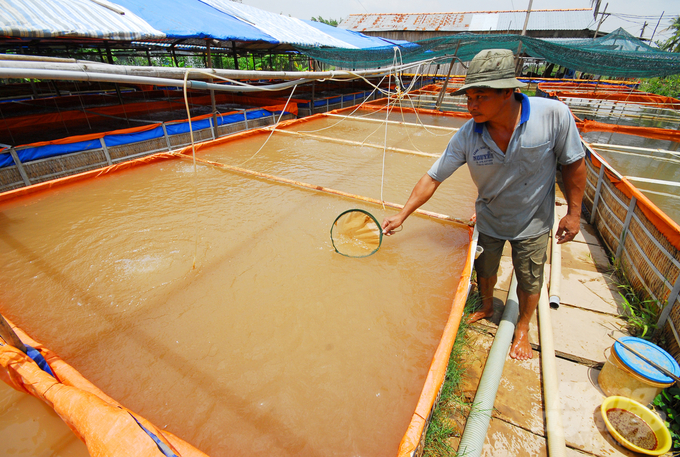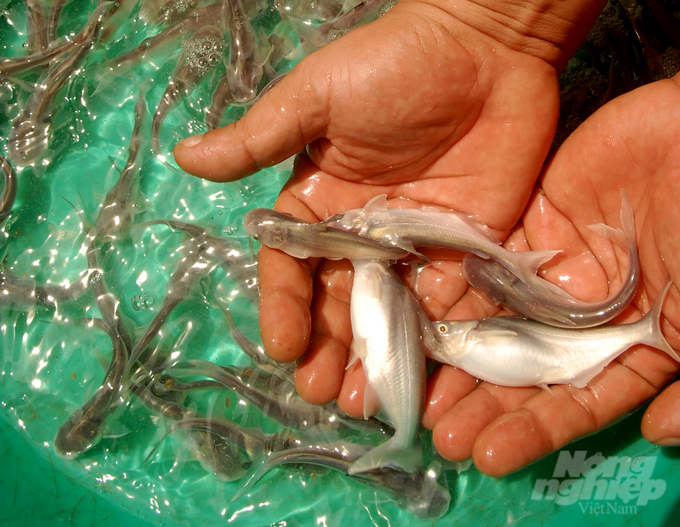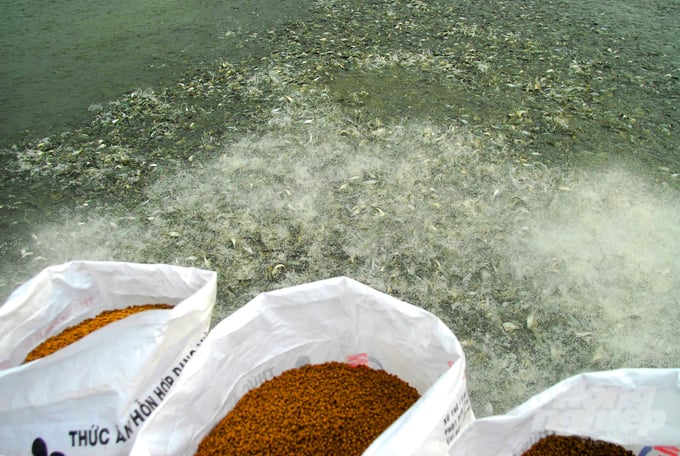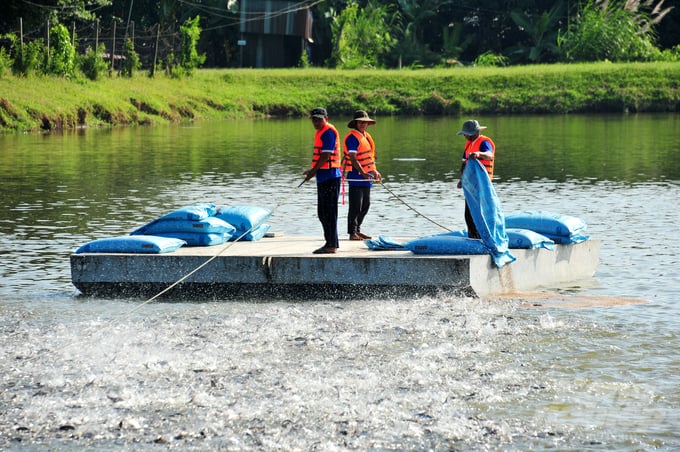November 26, 2025 | 05:44 GMT +7
November 26, 2025 | 05:44 GMT +7
Hotline: 0913.378.918
November 26, 2025 | 05:44 GMT +7
Hotline: 0913.378.918

Pangasius seed production in An Giang. Photo: Le Hoang Vu.
An Giang is known as a cradle of producing and processing pangasius for export, the second largest in the Mekong Delta. This locality is oriented by the Ministry of Agriculture and Rural Development to become a high-tech pangasius breeding centre providing high-quality seed in the direction of 3-level linkage. Consequently, step by step, the locality meets the demand for breeding stock, contributing to the regeneration of the industry towards sustainability, towards strict management through linkages.
Up to now, An Giang has built and implemented very successfully the linkage chain of 3-level pangasius seed production to serve high-quality seed in the Mekong Delta region, helping farmers with access to good seed sources. On average, these chains produce over 12 billion pangasius and 1.2 billion pangasius fingerlings with traceability each year. The quality of pangasius inside the chain is evaluated to be better than that of pangasius produced outside the chain due to advantages such as agile operation, larger size, and higher survival rate of 15-day-old nursery fish.

The chain of 3-level pangasius seed production in An Giang, on average, produces 12 billion pangasius fingerlings and 1.2 billion pangasius seeds with traceability each year. Photo: Le Hoang Vu.
Mr Nguyen Si Lam, the Director of An Giang Department of Agriculture and Rural Development, said that from the beginning of 2023 until now, in the whole province, there are 9 pangasius hatcheries with over 41,220 broodstock, of which 12,320 broodstock are of good quality from the Research Institute for Aquaculture No.2 (Institute 2) to supplement and replace the broodstock of pangasius hatcheries.
In An Giang, there are currently 4 businesses investing in concentrated pangasius farming areas in the direction of high technology. They are currently participating in the 3-level pangasius project. These 4 businesses include: Viet Uc Group with 104 ha, Nam Viet Binh Phu Joint Stock Company with 600 ha (150 ha of nursery stock, 450 ha of commercial farming), Loc Kim Chi Aquaculture Development Joint Stock Company with 140 ha and Vinh Hoan Joint Stock Company with 48.3 ha. These projects are in production, contributing to improving the quality of pangasius seed in the coming time.
According to the An Giang Department of Agriculture and Rural Development, the whole province currently has 910 ha of water surface area for raising pangasius fingerlings, which is expected to increase by 70 ha by the end of 2023, bringing the total area up to nearly 1,000 ha for raising pangasius fingerlings. In 2023, Viet Uc Group plans to produce about 100 million breeders, Vinh Hoan Joint Stock Company produced 30 million animals, and Nam Viet and Nam Viet Binh Phu produced 100 million breeds.

An Giang is a cradle of producing and processing pangasius for export, the second largest in the Mekong Delta. Photo: Le Hoang Vu.
Mr Doan Toi, the General Director of Nam Viet Group, said that the group's hi-tech pangasius farming project has a scale of 600 ha, with a total investment of VND 4,000 billion. The project is divided into 2 zones, including: High-quality 3-level pangasius seed production area with a 150-ha farming area and an investment capital of VND 1,000 billion. High-tech Agricultural Park for commercial catfish farming, with an area of 450 ha and an investment of VND 3,000 billion.
In which, each year, the production area of high-quality 3-level pangasius will produce about 360 million high-quality pangasius seeds to serve the Company's farming areas. The remaining pangasius will be provided to Mekong Delta farmers with healthy, disease-free pangasius breeds, contributing to helping people raise fish with high economic efficiency. For the commercial pangasius farming area, each year, about 200,000 tons of high-quality raw pangasius are produced for processing and export.

Many large enterprises invest in raising high-quality pangasius fingerlings in An Giang. Photo: Le Hoang Vu.
According to Mr Doan Toi, in addition to producing high-quality 3-level pangasius seed, Nam Viet Group also invests in a commercial pangasius farming area equipped with modern, synchronous and specialized technology at the regional level. One of the goals of the project is to complete the closed and sustainable value chain of enterprises.
Translated by Hoang Duy
/2025/11/24/3536-2-112800_176.jpg)
(VAN) Dong Nai now has tens of thousands of hectares of forests certified for sustainable management, and this area will continue to be expanded in the coming period.

(VAN) Vinh Ha hamlet (Dai Xuyen commune, Hanoi) is shifting away from small-scale farming as households adopt bioscurity into their breeder chicken models.

(VAN) Heavy rains make aquatic species more vulnerable to disease. Proactive water management and high-tech systems help farmers prevent outbreaks and protect yields.

(VAN) Greenhouses are shifting production mindsets in Binh Lu commune, enabling farmers to ‘weather the sun and rain’ and secure stable vegetable harvests throughout the year.

(VAN) Green transition is crucial for the Mekong Delta amid climate change and stricter standards, offering a path toward sustainability.

(VAN) Dong Thap promotes agricultural restructuring, forms large specialized farming zones, raises the value of agricultural products and develops toward ecological and high-tech directions.
/2025/11/22/4018-4-213342_747.jpg)
(VAN) The Mekong Delta Agricultural Experts Club has attracted 143 experts and researchers to participate in providing consultancy and contributing initiatives to the development of one million hectares of high-quality rice.